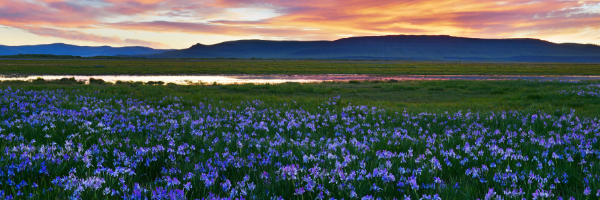23
Dec
Take Action: USDA’s National Organic Program Must Protect Biodiversity

(Beyond Pesticides, December 23, 2019) An unintended consequence of the National Organic Standards, the rules that govern certified organic agricultural production, actually provides an incentive for the conversion of critical ecosystems to organic cropland, fueling deforestation and biodiversity loss.
One National Organic Program (NOP) requirement for organic certification—a three-year waiting period during which land must be free of disallowed substances—encourages the conversion of critical ecosystems, which do not require the three-year waiting period.
Conversions of native landscapes to working organic land to date include losses of: a California forest, Colorado prairies, a New Mexico wetland, and native sagebrush lands in Washington and Oregon. The Wild Farm Alliance, which provides critical leadership on the issue, points out, “These areas, that were once delivering critical ecosystem services and providing essential habitat for wildlife, are no longer performing the same functions and [it] would take hundreds of years to reverse the damage.”
The National Organic Standards Board (NOSB), which is responsible for advising the U.S. Department of Agriculture (USDA) on implementation of the Organic Foods Production Act (OFPA), has been studying this problem since 2009, ultimately resulting in a 2018 recommendation. Beyond Pesticides commented on the proposal, “Despite efforts of organic farmers to build and protect biodiversity, it is unlikely that the organic farm will achieve the same level of biodiversity and ecological resilience as the original ecosystem. On the other hand, the conversion of conventional, chemical-intensive agriculture to organic agriculture provides huge benefits to biodiversity through both the absence of toxic inputs and positive measures to increase biodiversity in soil-based systems that are required by OFPA or its regulations. Therefore, Beyond Pesticides supports efforts by the NOSB to eliminate incentives to convert high-value native land to organic production, as well as to increase incentives to convert chemical-intensive farmland to organic production.”
In May 2018, the NOSB approved (nearly unanimously) the revised, formal Eliminating the Incentive to Convert Native Ecosystems to Organic Production recommendation. Typically, once the NOSB has made a recommendation, NOP puts it on the rulemaking agenda, develops a rule proposal on the basis of the recommendation, solicits public comment, and then develops a final rule. Yet, NOP has taken no action to bring the recommendation into its rulemaking process. Public pressure on USDA is needed to persuade NOP to “do its duty” and bring the NOSB recommendation forward to the rulemaking agenda.
Letter to USDA
I am very concerned about the failure of the National Organic Program to protect native ecosystems by implementing the NOSB recommendation “Eliminating the Incentive to Convert Native Ecosystems to Organic Production.”
Conversions of native landscapes to working organic land to date include losses of: a California forest, Colorado prairies, a New Mexico wetland, and native sagebrush lands in Washington and Oregon. The Wild Farm Alliance points out, “These areas, that were once delivering critical ecosystem services and providing essential habitat for wildlife, are no longer performing the same functions and [it] would take hundreds of years to reverse the damage.”
Despite efforts of organic farmers to build and protect biodiversity, it is unlikely that the organic farm will achieve the same level of biodiversity and ecological resilience as the original ecosystem. On the other hand, the conversion of conventional, chemical-intensive agriculture to organic agriculture provides huge benefits to biodiversity through both the absence of toxic inputs and positive measures to increase biodiversity in soil-based systems that are required by the Organic Foods Production Act and its regulations.
The NOSB recommended nearly unanimously that NOP should adopt regulations to define “native ecosystems” more specifically and require a 10-year waiting period before such land can be converted into organic cropland. With the crisis in loss of biodiversity that we are experiencing, it is important that organic producers lead the way in protecting the diversity of life.
Please initiate regulations eliminating incentives to convert native ecosystems to organic production as soon as possible.
Thank you.











PROTECT BIODIVERSITY!!!
April 1st, 2020 at 4:08 pm